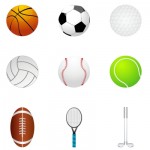 When interviewing someone for an employee newsletter article, I always ask the meaning of unusual terms, acronyms (a word, like OPEC, formed from the initial letters of other words) and initialisms (a group of initial letters pronounced individually, like CBC).
When interviewing someone for an employee newsletter article, I always ask the meaning of unusual terms, acronyms (a word, like OPEC, formed from the initial letters of other words) and initialisms (a group of initial letters pronounced individually, like CBC).
People often reply, “Everyone knows what it means” because they are insiders familiar with the industry’s jargon — and every industry has some. But it’s my job as writer to assume that someone won’t, so I explain what the mystery term is up front.
Probably the worst culprits for throwing around industry jargon are sports commentators.
The men in my household are all sports fans, so I’ve heard a lot of the terms. In hockey, players don’t just get a goal, they “elevator it,” go “top shelf” or “roof daddy,” possibly when the other team is unsuccessfully “on the PK” (penalty kill). In baseball, an easily caught fly ball is a “can of corn,” a fastball is “cheese” and a pitcher can be said to “have some good giddy-up.” A “sandpaper series” is when the teams involved irritate each other.
Earlier this year, I ran into a whole new vocabulary listening to commentary on curling. This is a sport I know nothing about, so I had no idea what the announcer meant talking about “hit through the hole,” “last draw” and “threw a runback hit and stick for three.” Whaaat?
A friend has taken up lawn bowling; yep, it’s got its own jargon, too. A ball is actually a “bowl,” and there are “backhand draws,” “hammers,” a “hog line” and “bowling to the Jack.”
Writers have their own secret words, too, as I was reminded when reading a fiction writer’s blog. She talked about “wip” (which from the context seemed to mean work in progress), “pubbed nonfic writer” (published non-fiction writer), “ms” (manuscript) and “SASE” (self-addressed stamped envelope).
Sports announcers can get away with their jargon only because many of the listeners are fans and followers of the sport. As insiders, they get it.
Writers shouldn’t assume any such thing. Please, be kind and explain.
Image: Sports balls by “digitalart” and FreeDigitalPhotos.net.
